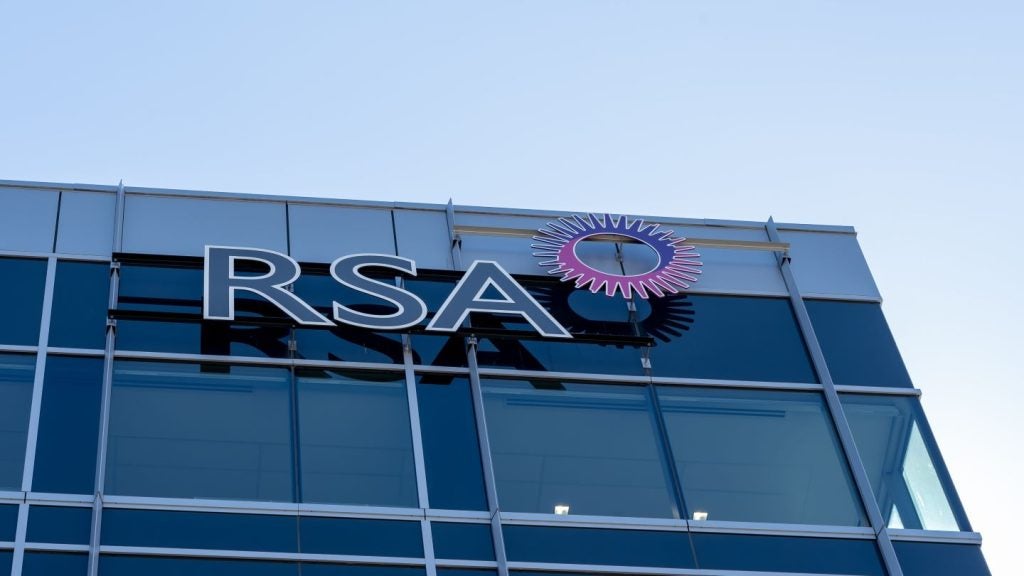In a new study by KPMG, China’s insurance sector
and the evolution of bancassurance,the professional services
organisation hasa mixed message for foreign life insurers in China,
most of which are making painfullyslow progress.
On a positive note, KPMG predicts that life
insurers can, in particular, expect a boost from rising demand for
health care-related insurance and long-term savings products.
Striking a not so positive note for insurers,
KPMG highlights the significant changes taking place in China’s
bancassurance sector and the pressure this is already placing on
the sales of many life insurers.
 Consumer preferences
Consumer preferences
In assessing demand for insurance, KPMG’s
message is positive. KPMG honed in on younger consumers in the
affluent income bracket, with 67% of respondents falling into this
category. The majority had degrees,
were employed in the professional or white
collar sectors and were relatively young, with 76% aged between 20
and 35.
How well do you really know your competitors?
Access the most comprehensive Company Profiles on the market, powered by GlobalData. Save hours of research. Gain competitive edge.

Thank you!
Your download email will arrive shortly
Not ready to buy yet? Download a free sample
We are confident about the unique quality of our Company Profiles. However, we want you to make the most beneficial decision for your business, so we offer a free sample that you can download by submitting the below form
By GlobalDataKPMG found that the most popular products
among respondents are accident insurance and critical illness cover
with 66% and 55%, respectively, having these. Also high on the list
are participating life (32% coverage), motor insurance (38%),
juvenile insurance (38%), medical outpatient (34%) and hospital and
surgical expenses (33%).
Typically, noted KPMG, about a third of
respondents were dissatisfied with their level of coverage and had
a strong desire for additional coverage.
The highest potential demand is for accident
insurance with half of respondents noting that they would like to
add to existing cover or buy cover for the first time. This was
followed by critical illness insurance with 49% of respondents
indicating that they would like to buy or increase cover.
Participating life products follow in third
place with 38% of respondents signalling that they would like to
buy or increase their coverage. Higher motor insurance cover ranked
fourth, but in the ambit of life insurers, in fourth position and
fifth overall is hospital and surgical expenses insurance with 35%
of respondents indicating that they would like to buy or increase
their cover.
Two other segments of significant interest to
life insurers are universal life and annuity insurance where
coverage of respondents is low at 6% and 5%, respectively. However,
there is a high level of interest to either buy or increase
exposure to these products among almost a quarter of
respondents.
There is also solid scope for increasing
linked-product sales. While 12% of respondents have products in
this category, 19% would like to buy or increase their exposure. In
tapping many of these opportunities, a
In a new study by KPMG, China’s
insurance sector and the evolution of bancassurance,the
professional
services organisation hasa mixed message for
foreign life insurers inChina, most of which are making painfully
slow progress.
On a positive note, KPMG predicts that life
insurers can, in particular, expect a boost from rising demand for
health care-related insurance and long-term savings products.
Striking a not so positive note for insurers,
KPMG highlights the significant changes taking place in China’s
bancassurance sector and the pressure this is already placing on
the sales of many life insurers.
Consumer preferences
In assessing demand for insurance, KPMG’s
message is positive. KPMG honed in on younger consumers in the
affluent income bracket, with 67% of respondents falling into this
category. The majority had degrees,
were employed in the professional or white
collar sectors and were relatively young, with76% aged between 20
and 35.
KPMG found that the most popular products
among respondents are accident insurance and critical illness cover
with 66% and 55%, respectively, having these. Also high on the list
are participating life (32% coverage), motor insurance (38%),
juvenile insurance (38%), medical outpatient (34%) and hospital and
surgical expenses (33%). Typically, noted KPMG, about a thirdof
respondents were dissatisfied with their level of coverage and had
a strong desire for additional coverage.
The highest potential demand is for accident
insurance with half of respondents noting that they would like to
add to existing cover or buy cover for the first time. This was
followed by critical illness insurance with 49% of respondents
indicating that they would like to buy or increase cover.
Participating life products follow in third
place with 38% of respondents signalling that they would like to
buy or increase their coverage. Higher motor insurance cover ranked
fourth, but in the ambit of life insurers, in fourth position and
fifth overall is hospital and surgical expenses insurance with 35%
of respondents indicating that they would like to buy or increase
their cover.
Two other segments of significant interest to
life insurers are universal life and annuity insurance where
coverage of respondents is low at 6% and 5%, respectively. However,
there is a high level of interest to either buy or increase
exposure to these products among almost a quarter of
respondents.
There is also solid scope for increasing
linked-product sales. While 12% of respondents have products in
this category, 19% would like to buy or increase their
exposure.
In tapping many of these opportunities, a
significant positive is that insurers could get a helping hand from
the government. “The government is keen to promote long-term
products and retirement solutions,” says Sam Evans, an insurance
partner at KPMG China. “We believe legislation to develop the
pension sector is an important catalyst to jump start further
market reform and create significant momentum in the future.”
Bank channel on the
ascent
In terms of insurance products already
purchased by respondents to KPMG’s survey, by far the dominant
channel used was insurance agents which accounted for an unweighted
average of 64% of sales across eight key health and life insurance
products.
On an unweighted basis banks accounted for 33%
of sales and other channels, such as telemarketing and the
internet, accounted for 3%.
However, the results of KPMG’s study show that
the channel used for past purchases is not necessarily the one
buyers will use in future. In particular, the bancassurance channel
looms large in respondents’ minds when it comes to future
purchases.
On an unweighted basis, across the same eight
products, a far lower 49% of respondents would prefer to buy
through an insurance agent in future. By contrast, 44% would prefer
to buy through the bancassurance channel and 7% through other
channels.
In interviews with banks and insurers, KPMG
identified two key reasons for insurance buyers’ drift towards the
banks. For one, banks are viewed as “financial supermarkets” and
thus an easier route through which to do business. Secondly, and
indicating a big shortcoming among insurers, consumers have a
higher level of confidence that banks’ service relationship
managers will deliver a higher quality of service than insurers’
agents.
However, contrary to what this would suggest,
sales through the bancassurance channel declined steeply in 2011.
The decline, notes KPMG, is being blamed for a slowdown in life
premium growth from 29% in 2010 to 11% in 2011. Some large banks
experienced a 20% to 30% decline in bancassurance premiums in
2011. KPMG ascribes the decline in sales of insurance through banks
to four key reasons:
- regulation, especially the introduction of a
regulation effectively banning insurance sales people from selling
insurance products in bank branches - availability of bank sales staff experienced
in selling insurance is still limited; - liquidity constraints in the banking sector
has resulted in banks being less keen on deposit replacement
insurance products; - and yields on insurance products are less
attractive than those on other wealth management products.
As a more general reason for lower growth in
premium income, KPMG points to concerns over inflation that are
creating higher customer expectations and hampering the sale of
participating and long-term life products.
Banks go it alone
Despite the poor showing of bank insurance
sales in 2011, KPMG believes life insurers will find it difficult
to deliver significant growth through the bancassurance
channel.
Of particular concern, KPMG highlights a trend
towards banks owning their own insurance
subsidiaries. Over the past 12 months, notes
KPMG, a number of major banks including China Construction Bank,
China Merchants Bank, Agricultural Bank of China, and Industrial
and Commercial
Bank of China have established their own
insurance units although some are subject to regulatory approval.
In its study, KPMG stresses: “In the long term, we expect the
bank-owned insurers to start to dominate the distribution
opportunity created through their parent.”
KPMG refers to an estimate by banking group
HSBC that bank-owned insurers will enjoy a CAGR in premium income
of 26% over the next 10 years while insurers’ CAGR in premium
income through the bank channel will be a far-lower 9.5%.
Over the 10 years HSBC predicts that
bank-owned insurers will grow their market share from 6% to 30%.
Also of note is that despite banks having only been going it alone
without the assistance of insurance agents in branches for a very
short period, they appear to be doing a good job.
This was indicated by a mystery shopper
exercise undertaken by KPMG China employees at branches of 10
domestic and foreign banks in Beijing, Xiamen and Qingdao.
KPMG notes: “A majority of our field
researchers were comfortable that the [banks’] financial advisers
had a good understanding of the products discussed and were able to
explain the benefits of the product.
This is an encouraging result given concern
around the lack of training of bank sales staff.”
Against this background and given KPMG’s and
HSBC’s predictions of a rising market share of bank owned insurers,
China’s second-largest life insurer Ping An’s acquisition of a
52.4% stake in Shenzhen
Development Bank for CNY2.69bn ($400m) in 2011
begins to look like a very astute strategic decision.







